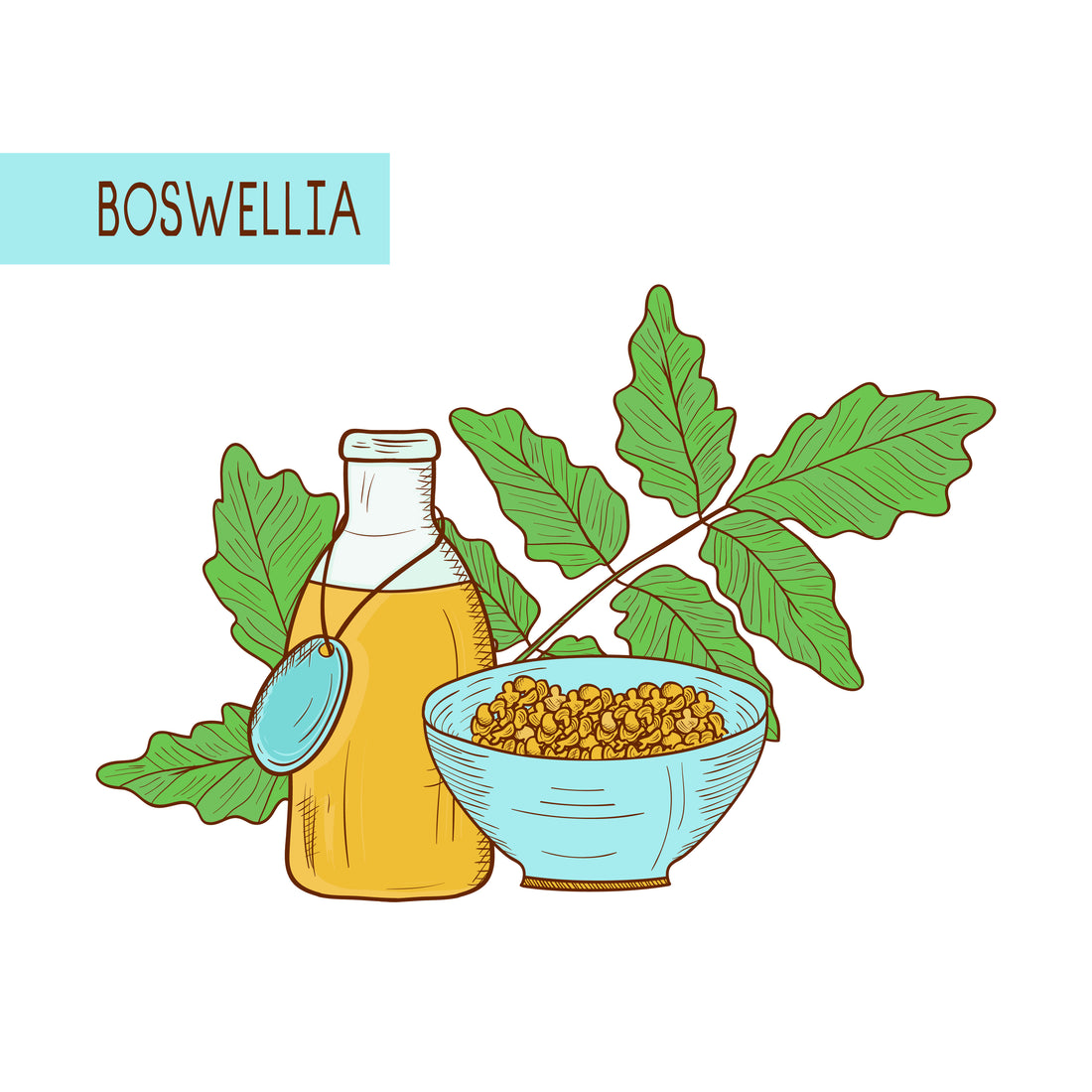There’s something about scarcity that seems to make an item that much more valuable. Thousands of years ago, this iconic “Gift of the Magi” used to be abundant in supply. Now, it’s a different story.
Introducing the Boswellia tree. Settled on a thick trunk, the branches of this particular tree are also thick and spindly. The bark is smooth with different shades of brown. Its flowers are small and white. And when the bark is cut or peeled back, a wonderful aroma comes out.
Boswellia (also known as Frankincense) has been around a long time. It has both cultural and biblical significance, and was one of the precious gifts baby Jesus received from the Magi.
Uses
Back then, herbs, spices and extracts were prized as luxurious commodities. Today, many people recognize and use boswellia for its other benefits (1), like:
- Wood production: The wood from the tree is used for pencils, splints, plywood, fences, and furniture.
- Frankincense production: When cut, the bark oozes a white gummy resin. This is later dried to form small clusters, which is what we know as frankincense. This is used in many perfumes, burning incense, and other household items.
- Medicine: The bark of some species can be chewed to help stomach upset. Parts of the tree can be burned and used as mosquito repellent, and many use extract to help relieve pain and inflammation.
- Bee and livestock feed: The flowers produce an attractive smell that brings in many pollinating bees. Leaves and seeds are used to help feed livestock as well.
- Environmental protection: The boswellia has a way of thriving in dry, rocky areas. While not many plants can, this tree does a great job of preventing soil erosion, as well as providing shade.
Benefits
Different parts of the plant are used for a variety of natural remedies. When the bark of the tree is peeled away, the resin can be used for its oil, as well as extracts.
Is Boswellia good for pain? It works great for chronic inflammation. It contains monoterpenes, diterpenes, triterpenes, and four of the major pentacyclic acids. These chemical components (3) have been noted to stop pro-inflammatory enzymes.
Some of the ways it can help include:
- Joint pain/arthritis: Studies (4) have been done to show that taking boswellia can help with joint pain and arthritis.
- Diabetes: With an imbalance of blood sugar levels, many diabetics have to take medication to help increase their insulin. One study suggests that taking boswellia can benefit the balance of normal blood sugar levels, as well as lower (5) harmful cholesterols.
- Asthma: Inflammation and irritation of the lungs can be mild or life-threatening. Boswellia may help reduce bronchial inflammation, as a study of 40 people (6) in India showed.
- Aromatherapy: Smelling pleasant things can help calm you down, lower stress levels and clear your head. It’s thought to work by stimulating the smell receptors in your nose, which sends messages to your brain (8) through your nervous system. The part of your brain that regulates and interprets emotions (called the limbic system) then receives these signals and responds accordingly.
- Immune System: Research has found that the Boswellia increases white blood cells (7) that are responsible for fighting off infections or foreign invaders. This can help boost your immune system to keep you healthy.
Risks
Does taking boswellia have side effects? Talk with your doctor before adding it to other medication for conditions such as arthritis, asthma, or diabetes. Also if you are pregnant or breastfeeding.
Boswellia is typically tolerated well, but taking too much (4) could result in heartburn, diarrhea, nausea, or other stomach upset.
Conservation
With the rise of the benefits of this ancient tree, demand has also increased. In recent years, there has been concern that the boswellia tree is in danger.
One study published in the Journal of Applied Ecology (9), Boswellia trees have come under many pressures that could lower their existence by up to 90% in the decades ahead.
“These changes are caused by increased human population pressure on Boswellia woodlands through cattle grazing, frequent burns and reckless tapping.” (10)
Because of this growing concern, conservationists, scientists and community members are coming together to find ways to sustainably plant, harvest and maintain more controlled versions of their wild habitat.
Wrap Up
Nature has so much to offer mankind in terms of health, happiness and perspective. Ancient trees with treasures for both then and now, Boswellia has played an important role in cultures and societies around the globe.
The resin of this tree is used for many things, from furniture building to pain relief. Medicinally, scientists have found that it offers great potential with those suffering from joint pain, diabetes, and immune support.
With the threat of extinction a real possibility, it’s important to seek products that are made with the highest quality. Some herbal or supplement companies may cut corners to save a few dollars, but the Boswellia (and you) will suffer for it.
Have you tried Boswellia as a way to improve your health?
References & Disclaimers
(1) https://www.fao.org/3/xii/0845-a1.htm
(3) https://www.ncbi.nlm.nih.gov/pmc/articles/PMC3309643/
(4) https://albertarheumatology.com/natural-health-products/boswellia/
(5) https://www.ncbi.nlm.nih.gov/pmc/articles/PMC5960856/
(6) https://pubmed.ncbi.nlm.nih.gov/9810030/
(7) https://pubmed.ncbi.nlm.nih.gov/20696559/
(9) https://besjournals.onlinelibrary.wiley.com/doi/full/10.1111/j.1365-2664.2011.02078.x
(10) https://www.nature.com/articles/s41893-019-0322-2
✝✝This noted statement is based on independent research and is not necessarily the opinion of the author
